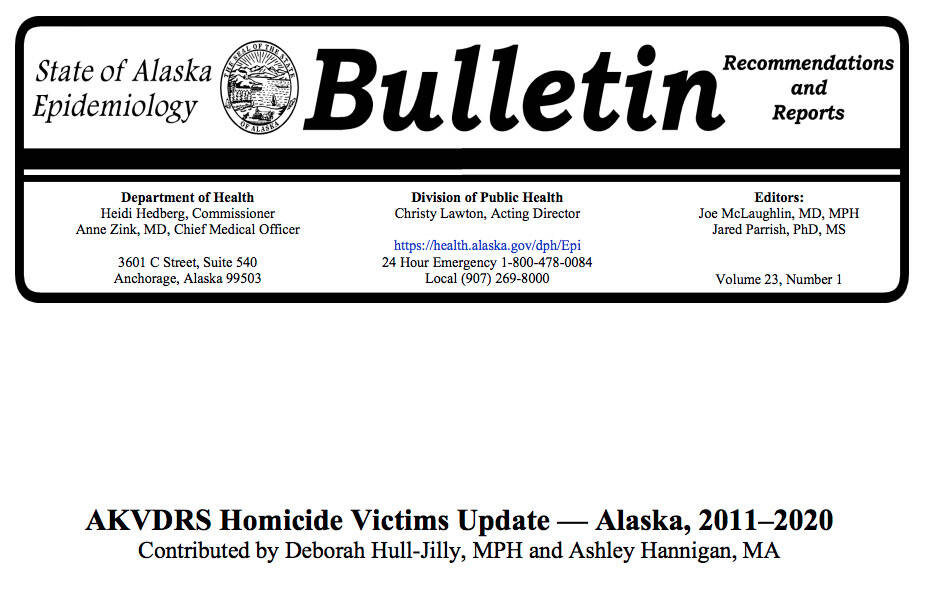The number of homicides in Alaska increased significantly from 2011-2020, according to an Epidemiology Bulletin released by the State Department of Health on Monday.
The report measures homicide rates by a variety of metrics, including age, sex, race, region, method, location and relationship to suspects.
Homicides accounted for 19% of the violent deaths in Alaska from 2011-2020. This week’s epidemiology bulletin says that the years of potential life lost in Alaska before the age of 65 nearly doubled from 1,110 in 2011 to 2,165 in 2019.
The Gulf Coast region, which includes the Kenai Peninsula, had the fewest homicides of any region in the state, at 27. The most homicides occurred in Anchorage, where 239 were reported.
In 2011, the homicide rate per 100,000 persons was 4.7, compared to 10.7 in 2019, though homicide rates fell in 2020.
The majority of homicides impacted those from 25 to 29 years of age, with generally fewer homicides impacting those older or younger. Firearms accounted for 301 homicides — or 57% of those reported.
In nearly 80% of homicides, at 407, the victim was under the influence of an impairing substance, either drugs or alcohol. From 2011-2015, the most common substance was alcohol, but from 2016-2020 the most common substance was marijuana.
To read the full epidemiology bulletin, visit health.alaska.gov.
Reach reporter Jake Dye at jacob.dye@peninsulaclarion.com.


